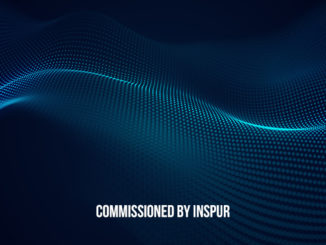
This year at the GPU Technology Conference (GTC18) our roaming camera crew was lucky enough to catch Dolly Wu, vice president and general manager of Inspur’s Datacenter/Cloud division. Inspur has been the fastest growing server vendor over the past couple of years, according to Gartner, and we expect the company to become an increasingly important player in the global market.
Wu discusses several topics in the video below, including the introduction of their first Power 9 based server. The new box is all about acceleration and has all of the bells and whistles, starting with NVLink 2.0, which, at 300 GB/sec (150 GB/sec each way) is 2.8X faster than a PCI-Express 4.0 x16 slot.
This is a big differentiator for the Power-based systems. The IBM fueled boxes can use NVLink to pass data from CPUs to GPUs and GPUs to GPUs at native NVLink rates. However, x86 systems equipped with NVLink still have to communicate through the system PCIe interface, which is limited to 64 GB/s with the newest 4.0 version.
The new Inspur Power9 system also sports PCI-Express 4.0 slots, eight memory channels per socket, and Open CAPI 2.0, which connects to storage or network and boasts a 2x advantage over PCI-Express 4.0 slots based on the same electronics.
Wu believes that Inspur’s key differentiation is that they work directly with customers (currently in the US, these are hyperscaler types) to discover their hardware pain points and then design systems to directly address the problems. They’re a total solution provider, meaning they cover the gamut from X86 2-4-8 way systems, to Power 9 systems, to one of the most GPU dense servers in the industry (eight GPUs in 2U).
Inspur recently announced its “Olympus” four-socket system, which it designed for Microsoft along with another server it has developed with Baidu. This Baidu server connects up to 16 GPUs to a single four-way server. Baidu is using this box for workloads ranging from brain simulations to autonomous driving simulation.
Keeping all of this hardware cool is a problem. With this in mind, Inspur is implementing liquid cooling for its most dense systems – like the two-way, eight GPU box mentioned above.





Be the first to comment